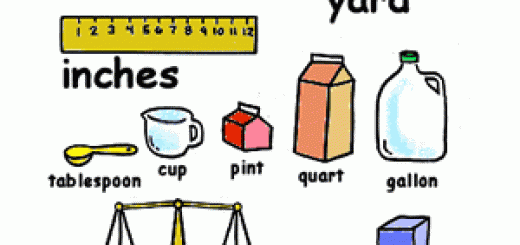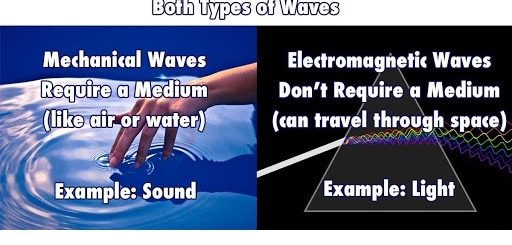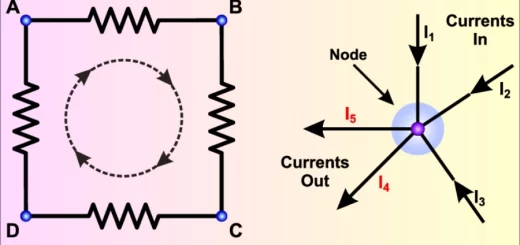Types and Laws of light reflection, Regular and Irregular reflection of light
The formation of inverted images of trees and buildings on the road when rain falls due to the reflection of light. A leather jacket produces irregular light reflection, while a stainless steel plate produces regular light reflection because a leather jacket is a rough surface, while stainless steel plate is a smooth surface.
Reflection of light
Light travels in straight lines and it does not permit through dark objects, so the result is the formation of shadows. Sometimes, in our daily life, we can observe the formation of inverted images of trees and buildings on the surface of water or on the road when rain falls.
When you throw a ball against the wall, it returns back (rebounds) from the wall, Similarly, when light meets a reflecting surface, it bounds again and this is known as “light reflection“. The surface, at which the reflection takes place is called the “reflecting surface”. Light reflection is the rebounding (returning back) of light waves in the same medium on meeting a reflecting surface.
Types of light reflection
Light is classified according to the nature of the reflecting surface into:
- Regular (uniform) reflection is the reflection of light rays when they meet (fall on) a smooth (uniform) and glistening reflecting surface, where the incident light rays are reflected in one direction, Examples of smooth surfaces: a plane mirror, a thin sheet of aluminium (foil), and a stainless steel sheet.
- Irregular (non-uniform) reflection is the reflection of light rays when they meet (fall on) a rough (non-uniform) reflecting surface, where the incident light rays are reflected in different directions, Examples of rough surfaces: a leaf of a tree, a piece of paper, a piece of leather, and a piece of wool.
The surface of a clean mirror causes regular reflection, while the dirty mirror surface causes irregular reflection.
Some concepts of light reflection
- The incident light ray is a narrow light beam that is represented by a straight line, it intersects with the reflecting surface at the point of incidence.
- The reflected light ray is a narrow light beam that is represented by a straight line, it is reflected from the reflecting surface at the point of incidence.
- Angle of incidence is the angle between the incident light ray and the line perpendicular to the reflecting surface at the point of incidence.
- Angle of reflection is the angle between the reflected light ray and the line perpendicular to the reflecting surface at the point of incidence.
When the angle of reflection of a light ray = 40°, this means that the angle between the reflected light ray and the line perpendicular to the reflecting surface at the point of incidence equals 40°. When the angle of incidence of a light ray = 30°, this means that the angle between the incident light ray and the line perpendicular to the reflecting surface at the point of incidence equals 30°.
Laws of light reflection
Fix a plane mirror horizontally and fix on its edge, a white paper, and a plastic protractor perpendicular to it. Direct a light ray on the plane mirror surface tangent to the paper. Measure the angle of incidence and the angle of reflection. Change the angle incidence several times and measure the angle of reflection in each time.
You observe that the angle of incidence = the angle of reflection changes according to the change of the angle of incidence since they are equal. The reflection of light is governed by two laws:
First law: Angle of incidence = Angle of reflection
Second law: The incident light ray, the reflected light ray, and the normal to the surface of reflection at the point of incidence, all located in one plane perpendicular to the reflecting surface.
When the light ray falls perpendicular on a reflecting surface, It will reflect on itself, because the angle of incidence and the angle of reflection is equal to zero.
The light ray that falls perpendicular on a glistening surface, reflects on itself because angle of incidence = angle of reflection = 0
There are three main types of light reflection
- Specular reflection
- Diffuse reflection
- Multiple reflections
Specular reflection occurs when light rays hit a smooth, flat surface and are reflected at the same angle they hit the surface. This creates a clear, undistorted reflection, like the one you see in a mirror.
Diffuse reflection occurs when light rays hit a rough, uneven surface. The incoming light rays are reflected in many different directions, scattering the light. This creates a blurry or hazy reflection, like the one you see on a painted wall.
Multiple reflection happens when light reflects back and forth between two or more surfaces. This can create a series of reflections, like the ones you see in a hallway of mirrors.
Why are these different types of reflection important?
Specular reflection allows us to see ourselves in mirrors and is used in many optical instruments like telescopes. Diffuse reflection allows us to see most objects around us. Without diffuse reflection, the world would be a very dark place as light wouldn’t bounce off objects and reach our eyes from various directions. Imagine a world where you could only see things that had shiny surfaces!
Light wave properties, Analysis of white light, Spectrum colours and Light intensity
Light refraction effects, Law of light refraction, Mirage and Apparent positions of objects
Properties of electromagnetic waves and Light reflection
What are the laws of light reflection?
The regular reflection and irregular reflection of light
Properties of light interference and light diffraction
Light refraction, Snell’s law, Factors affect the absolute refractive index of a medium



